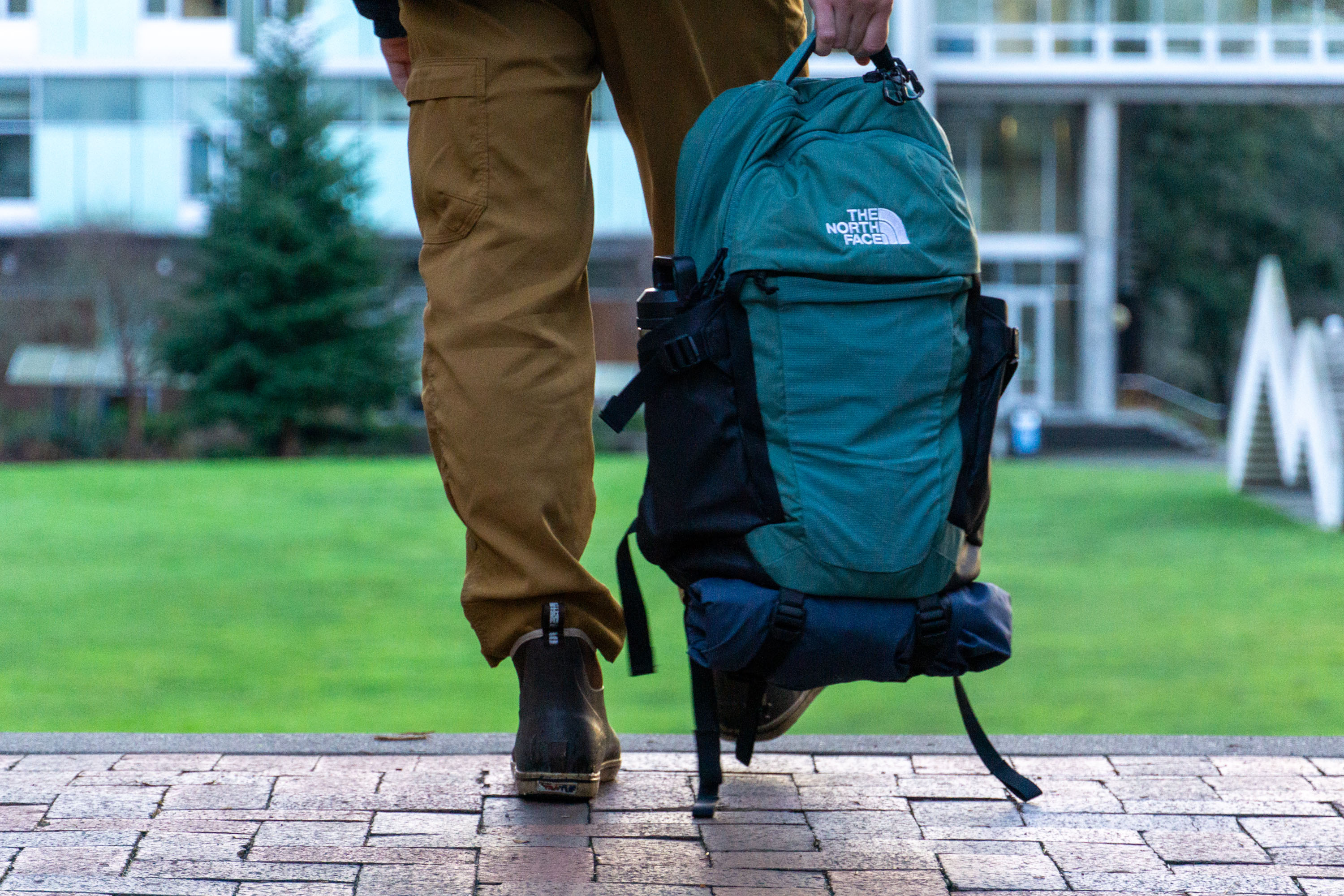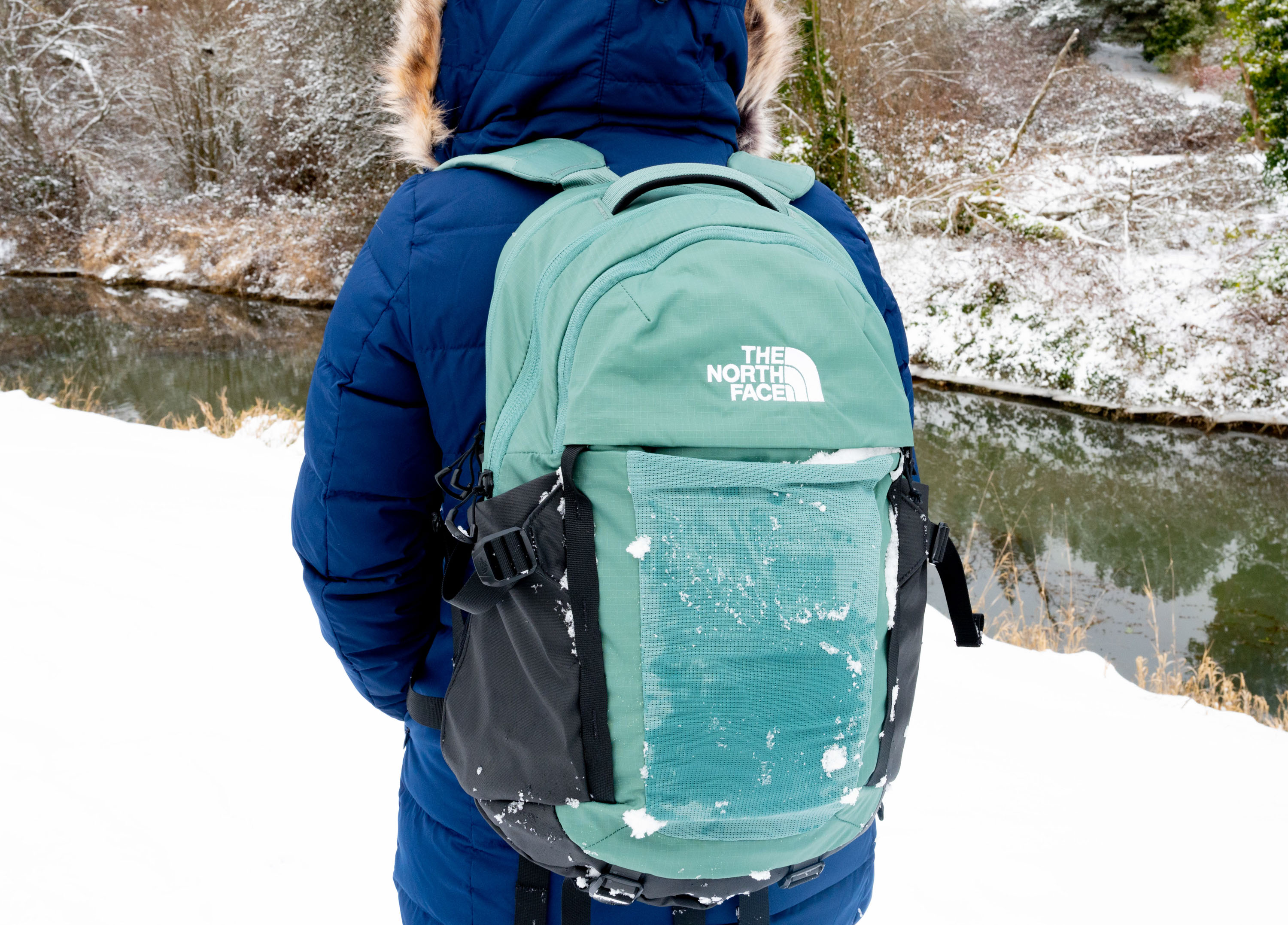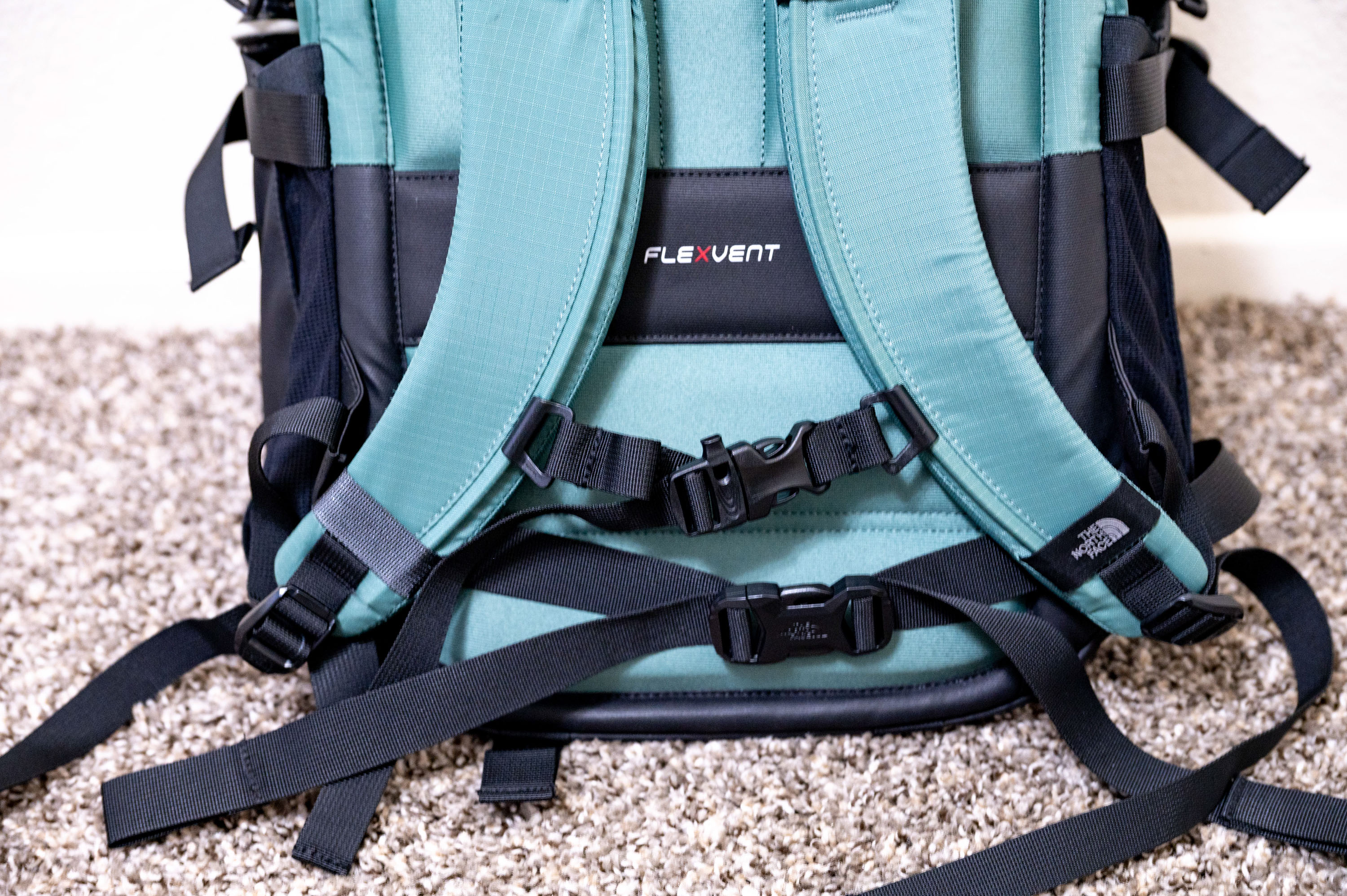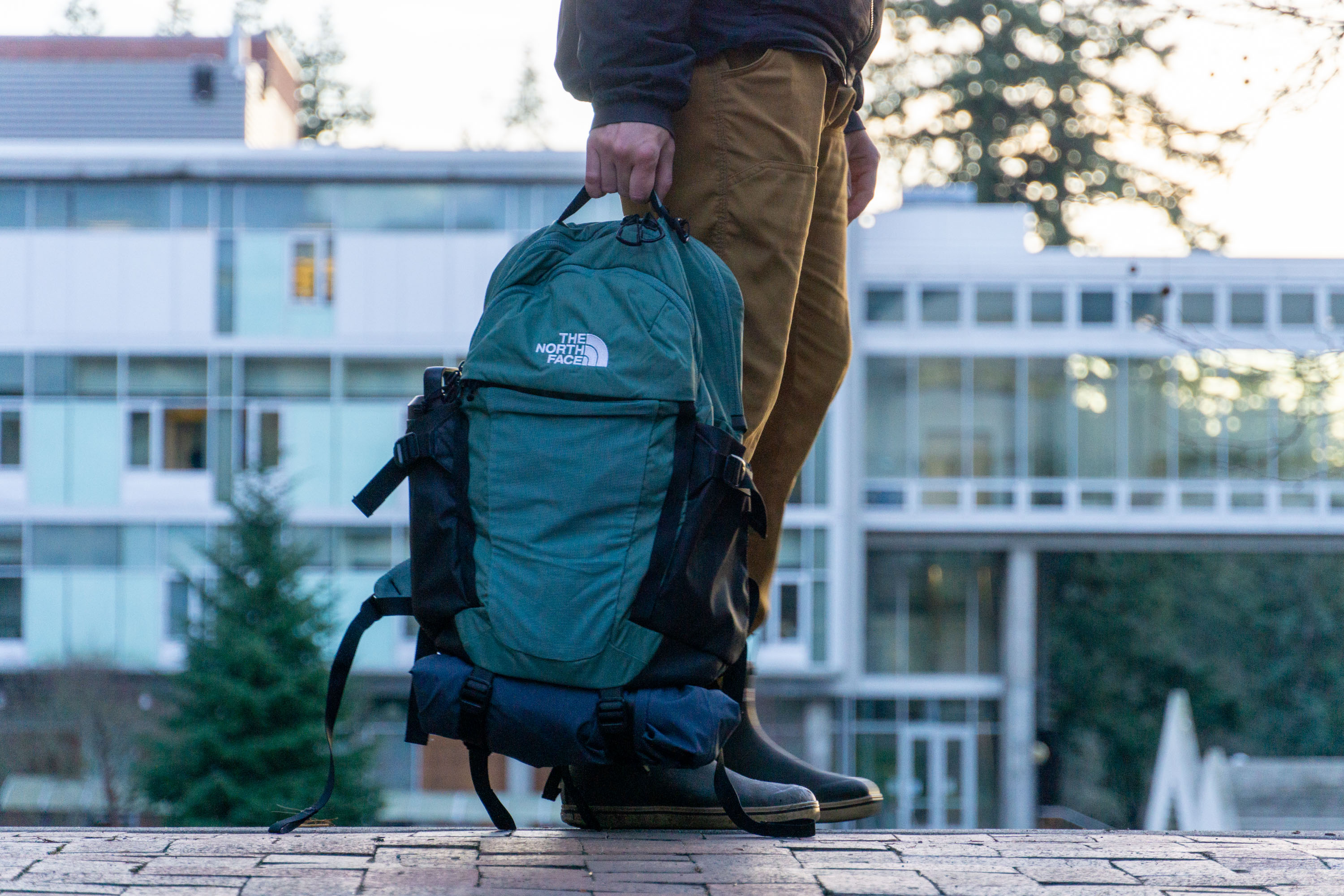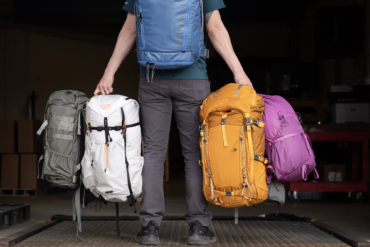At any given moment, I probably own around six backpacks — and not a single one of them functions perfectly the way I need it to. As an outdoor freelance photographer, writer, and outdoor athlete, I can’t seem to find a standalone backpack that does it all.
So instead, I’m stuck with a stable of packs for every direction I’m pulled in day-to-day. The promise of a do-it-all pack seemed far-off and ripe for concessions, but when I was given the opportunity to test the Recon 30L Backpack from The North Face, an everyday carry backpack with almost all of the bells and whistles, I was intrigued. It certainly ticked several boxes right off the bat.
For a solid week, I used this backpack for all of my side jobs, adventures, and countless errands. I wanted to explore how versatile this backpack was and how many backpacks it could replace, which isn’t an easy challenge given that I’m constantly toting around my laptop, Nikon Z6, extra layers, notepads, books, snacks, and a water bottle.
And, while I’m aware this pack isn’t meant for cameras, I found that this pack did a shockingly decent job at condensing a lot of my gear into a single pack. Just its capacity to fit my 17-inch laptop alone reduced the number of bags I needed to carry with me. Could this pack actually live up to the hype and do it all?
In short: The North Face Recon ($109) backpack is a good value for a multipurpose pack that I found handy on several occasions when all of my gigs seemed to coalesce. My favorite feature is the extra padding that gave me peace of mind when carrying delicate items like my camera gear. I also enjoyed all of the pockets, which made staying organized pretty easy. Yes, this 30L pack is small, but it’s also pretty mighty. It carries far more than I expected.
To see where the Recon lands among other backpacks available, check out GearJunkie’s Best Backpacks guide.
- Capacity: 30 L
- Weight: 2 lbs., 9 oz.
- Dimensions: 11.6'' x 7.5'' x 19.3''
- Compartment access: Zippered top access to three compartments
- Material: 210D recycled nylon ripstop with non-PFC DWR finish
- Electronic storage: 19'' x 11'' laptop sleeve, internal organizer pockets
Pros
- Comfortable and adjustable FlexVent suspension system carries weight well
- Fleece-lined pocket for sunnies or glasses
- External compression straps that don’t interfere with zippered access
- Versatile feature set means the pack can be used for everything from hiking to campus
- Women's- and men's-specific versions available
Cons
- When fully loaded, smaller internal pocket robs space from the larger main compartment
- Laptop sleeve isn’t quite suspended enough for full protection
- Only comes in one volume
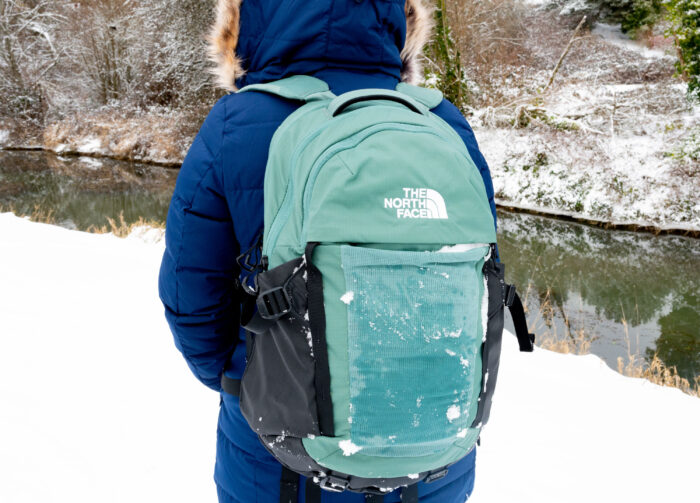
The North Face Recon 30L: Review
Can One Pack Do It All?
The lineup of do-it-all backpacks on the market is thick, and while they all make big claims, it’s too often I’m left holding the bag in one way or another and making do with a pack that can’t quite cover all the bases. Most of these packs fashion themselves as lifestyle or college packs, which the Recon certainly does, but I quickly found its utility stretched far off campus.
From the onset, the Recon impressed me with its separate and smart compartment layout, which allowed me to carry my things in a single bag without worrying about my gear smacking against each other. I particularly enjoyed that the 18.9″ x 11″ laptop sleeve was able to accommodate my hefty 17-inch laptop.
As someone who carries camera and laptop gear, I’ve always had to bring two or three packs — my Timbuk2 for just my laptop, my Tenba for my camera gear, and a small REI outdoor bag for food and water that I don’t want to potentially interfere with my electronics.
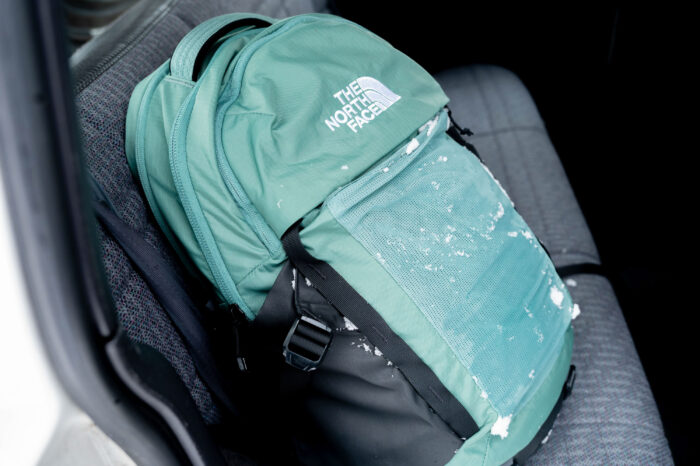
While I know the Recon isn’t designed for a camera, I did find that with all the robust padding, I wasn’t worried about using it as a quick camera bag. I also liked that if I needed to hike somewhere nearby for some outdoor shots, I didn’t have to switch packs yet again.
Another feature of this pack that I liked was its comfort. Admittedly, I didn’t like how wide the shoulder straps were right away, initially thinking they were overly wide and oddly positioned. But it turned out that the width of the straps made it super durable and comfortable, especially over long distances, because it distributed the weight so well.
I was also impressed with the craftsmanship. The seams on the Recon pack felt like they were going to withstand several years of constant use easily.
While I found this pack to be a champ at carrying a lot of weight, I did find the pack itself to be on the heavy side for a 30L pack at 2 pounds, 9 ounces. And when I added a Nikon Z6 camera, a tripod, lens, and a 17-inch laptop to the mix, the weight quickly added up. However, I realized that the extra padding was to blame, and if it meant extra comfort while keeping my livelihood protected, then I honestly shouldn’t gripe.
Pockets and Storage
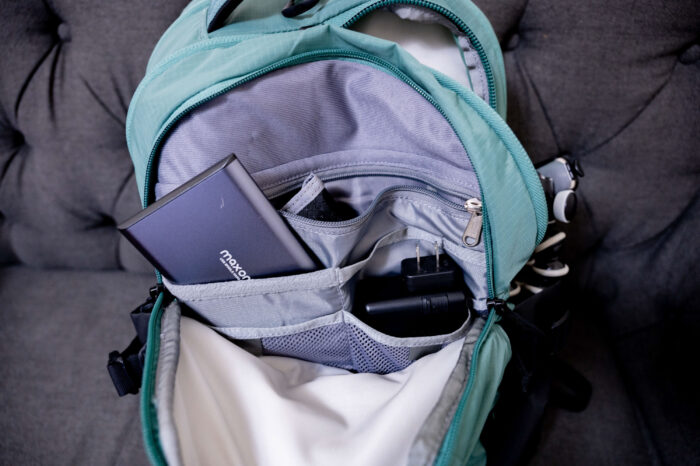
Many of the bags I have are single compartments, which is why when I’m fed up with multiple packs, I sometimes grab my largest pack and wrap my gear in puffy jackets — a tactic that works until I need to wear them.
Not so with the Recon. Partitioning the interior space between one large compartment and another well-organized space, the pack has room for kits of all sizes, from fiddly cords and chargers to textbooks. The main compartment is spacious and isn’t broken up with dividers unnecessarily, while the second compartment loads up on the pockets, sleeves, and pouches.
With so many compartments and pockets, the Recon performed well with keeping my laptop, camera, and smaller accessories like batteries, cords, and hard drives organized. Even snacks and water bottles weren’t problematic because the lining of the pockets would keep my gear dry if anything leaked.
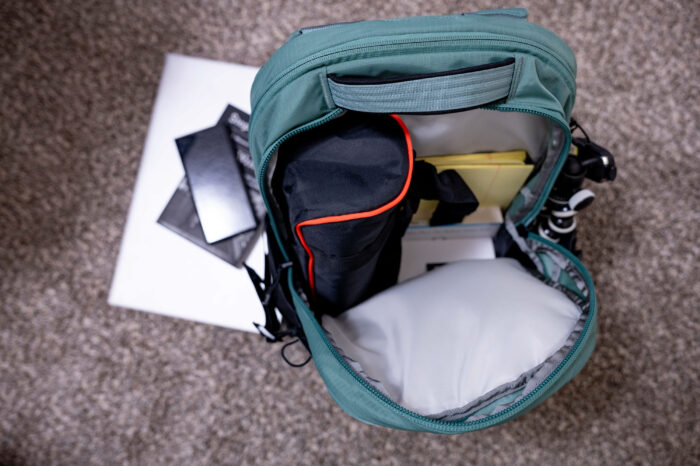
What I also like is that the Recon backpack is simple, yet there are features that didn’t fall on the cutting room floor, like water bottle pockets and an external mesh pouch — where items like a puffy get stored. There’s even a set of compression straps at the bottom of the pack to wrangle a rain jacket.
Ultimately, I’m impressed by the ample storage and comfort of this pack. To me, on my 5′ 2″ build, it felt like the Goldilocks size and carried everything I needed and then some.
Carrying Comfort
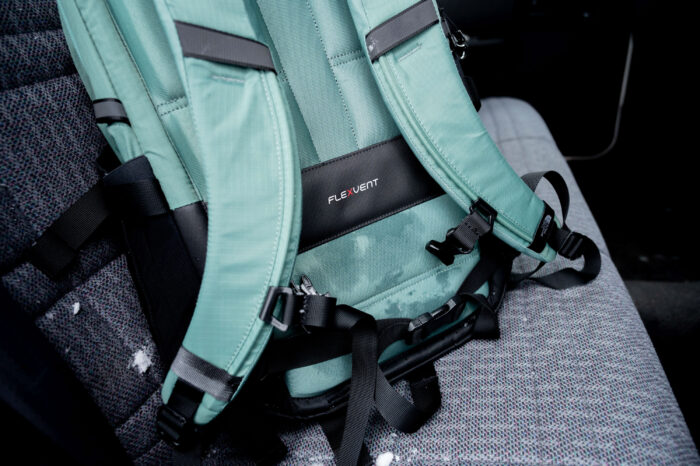
As mentioned above, the carrying comfort on the Recon pack punches above its weight class — likely owed to the heft of textbooks intended to be carried in it. The FlexVent suspension system has ample foam on the back panel and is covered in a soft chemise fabric. Paired to this are a set of articulated shoulder straps, which attach to the pack body with a slightly more narrow webbing to facilitate the correct angle.
While there is a hipbelt on the Recon, it’s fairly minimal and didn’t find much use when the pack was lightly loaded. It is, however, handy to keep the pack on track when loaded down with extra kit.
Room for Improvement
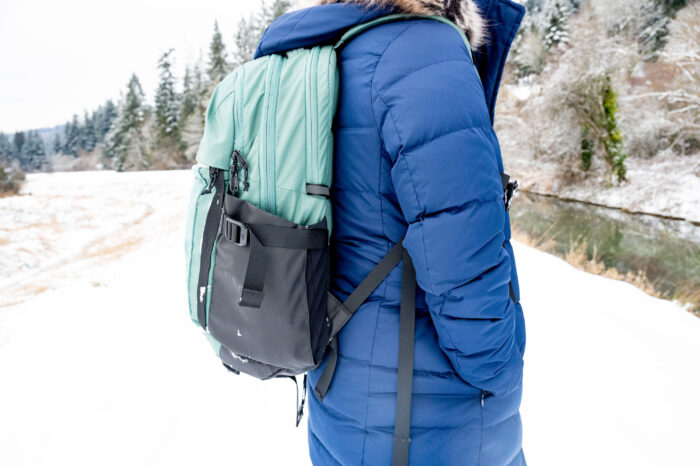
Since this pack is intended for daily use, I understand keeping valuables secure is a priority. However, adding a few inches of extra zipper length to the main compartments would have made for easier access to smaller objects at the bottom while still keeping items from spilling out. It certainly would have cut down on the amount of time I blindly fumbled for small items at the bottom.
Typically, I’m used to stretch-mesh side pockets for oddly shaped items. But with this pack, the pockets are pretty stiff and deep, and they come with buckles to keep things secure. Initially, I wasn’t a fan of the restrictive pockets, but I came to like that they are more durable than mesh and really do keep my items more secure.
And finally, the build on the Recon certainly does scream “college student!” — and that busy exterior won’t be for everyone. It’s the utilitarian ethic showing through, and while a little subtlety would be appreciated, it’s hard to argue when there’s a spot for everything.
The North Face Recon 30L: Conclusions
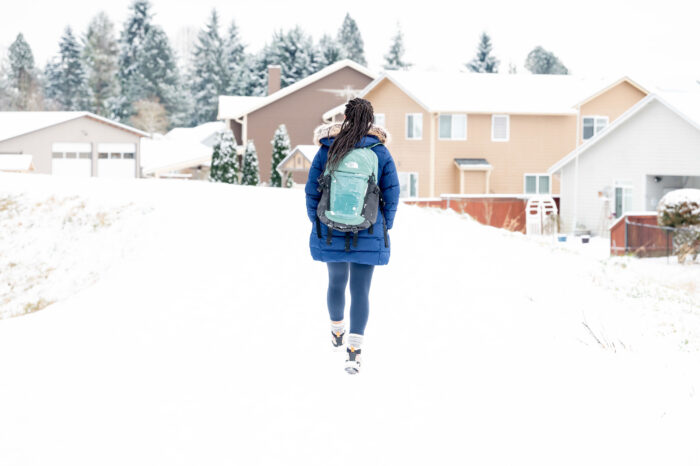
So, after some testing, I came back to my original question: could I replace my other packs with The North Face Recon 30L? A resounding yes. However, for me, I still feel that I need a pack that is more camera-friendly from time to time.
But even still, the Recon simply hits the high points for what I’m looking for in a day-to-day pack: enough space (that’s well balanced between spacious and organized), a comfortable all-day carry, and thoughtful add-ons that turn a campus bag into a daypack for quick hikes. It’s hard to pin down where the Recon falls entirely flat, if anywhere.
Those seeking more options for an all-purpose backpack can check out the Osprey Nebula 32L ($140). It has similar features as the Recon, such as ample storage, a smaller but sizable 16-inch laptop compartment, a scratch-free pocket, and a removable hip belt. The only significant difference is the higher price tag.
Folks looking for volume options might also consider the Patagonia Black Hole backpack, which is available in both 25L and 32L sizes. Like the others, it’s ideal for transitioning from work to leisure, as well as air travel. It is one of the more expensive options at $169, but it is also the lightest: weighing only 1 pound, 11 ounces.
If you want a pack that’s great for work, hiking, and air travel, the other options are worth considering. But, if you want a backpack that has substantial padding for longer wear while keeping more fragile possessions intact — and without breaking the bank — you should consider The North Face Recon.
